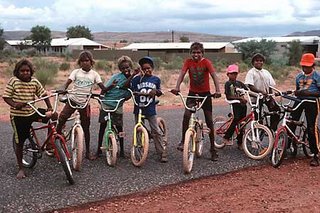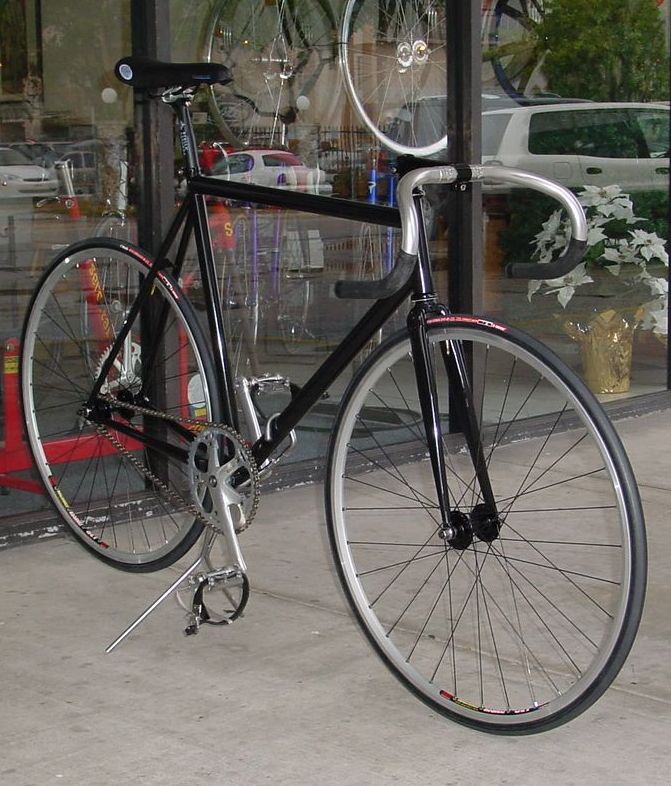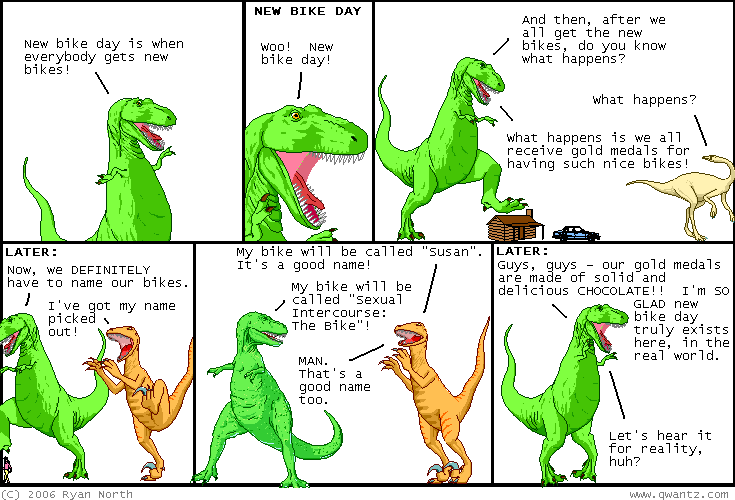Sunday, June 11, 2006
Thursday, June 08, 2006
Wednesday, May 24, 2006
Saturday, May 13, 2006
planned obsolescence
A private taxi driver in Cuba, driving 200-250 miles
(300-400 km) a day, cannot do better than a mid-'50s Chevrolet sedan converted to diesel to cut his fuel costs.
The Chevy is the car that needs least overhauling, says Roberto Diaz. "A 1955 or 1956 Chevrolet is the most durable car. Some even have the original factory engine working."
"I never thought these cars could last so long, a whole lifetime," said taxi driver Reinaldo Armengot. "The makers must have made a mistake."
(300-400 km) a day, cannot do better than a mid-'50s Chevrolet sedan converted to diesel to cut his fuel costs.
The Chevy is the car that needs least overhauling, says Roberto Diaz. "A 1955 or 1956 Chevrolet is the most durable car. Some even have the original factory engine working."
"I never thought these cars could last so long, a whole lifetime," said taxi driver Reinaldo Armengot. "The makers must have made a mistake."
Thursday, May 11, 2006
BIKE GANGS!!?

"I have a video of the race of death as well, however we ended up living and my bike light came on. It was indeed a minor miracle. I may try and find it.
Our gang is called AE|BC. Algate East Bike Club. We're a bunch of bike riding toughs, present in NYC, London and of course Brisbane now."
'I am in a gang too.
"Zombie Bike Gang", and we are obviously cool, 'cos we are zombies.
Also: we aren't so much as a gang, as two girls with hoodies and bikes.'
links to some references to bike gangs:
bikegangone
toby barraud's text + pictures
toby barraud's pictures
http://theboltsandnuts.blogspot.com/
http://www.frankiefeverforever.com/huggies.html

tuff riding music >
where there's a will there's a whalebone - islands
Tuesday, May 02, 2006
thoughts
Everyone who has looked at the same area as me previously has seemed to spend their time on proving the viability of pedal powered vehicles, or tying to create products that fit current behaviour. I believe the answer to the problem does not lie there. I have to change behaviour, rather then adapt the technology to current behaviour.
However people are unwilling to change their behaviour, as seen by the short lived 20% increase in public transport usage when petrol first went over $1.30. As petrol remained at this price, people became used to it, and started moving back to their cars again.
So I plan to take as my model, the business plan of the ipod, and implement it in pedal powered transport.
The ipod started with a product that satisfied specific needs, and rendered other needs less important then they were previously. One important feature was that it was aesthetically appealing. The interesting thing is that they have managed to sustain the development over 5 years and in the foreseeable future the growth does not seem to show any signs of slowing. This is good because it goes against the trend for cool products to fall by the wayside. Also unlike many other products, ipods feature prominently in their users lives, like mobile phones and other high profile electronic products. These all required people to sacrifice certain things in exchange for other benefits. I would like to try to tap into people's reptilian instincts and emotions, and create a need or desire for environmentally friendly transport on a more base level. It is also important to ensure that it is a self-propagating and perpetuating culture that will survive for a long time.
tuff riding music - blood on our hands / Death From Above 1979
However people are unwilling to change their behaviour, as seen by the short lived 20% increase in public transport usage when petrol first went over $1.30. As petrol remained at this price, people became used to it, and started moving back to their cars again.
So I plan to take as my model, the business plan of the ipod, and implement it in pedal powered transport.
The ipod started with a product that satisfied specific needs, and rendered other needs less important then they were previously. One important feature was that it was aesthetically appealing. The interesting thing is that they have managed to sustain the development over 5 years and in the foreseeable future the growth does not seem to show any signs of slowing. This is good because it goes against the trend for cool products to fall by the wayside. Also unlike many other products, ipods feature prominently in their users lives, like mobile phones and other high profile electronic products. These all required people to sacrifice certain things in exchange for other benefits. I would like to try to tap into people's reptilian instincts and emotions, and create a need or desire for environmentally friendly transport on a more base level. It is also important to ensure that it is a self-propagating and perpetuating culture that will survive for a long time.
tuff riding music - blood on our hands / Death From Above 1979
messenger bags for couriers
wikipedia says the messenger bag (also called a courier bag) was originally used by telephone line repairers in the 1950's to carry their tools as they climbed up the poles. the distinctive feature that differentiates the messenger bag from other bags is it's one strap, worn diagonally over one shoulder and across the chest. this enables the bag to be swung to the front of the user without having to take it off, allowing for easier access while on the move.
companies that make messenger bags include
www.timbuk2.com
http://www.chromebags.com/
http://www.crumpler.com.au
http://www.manhattanportage.com
somehow these bags have become de rigeur for city living normal people, particularly in melbourne the crumpler brand, which is an australian company which is doing fairly well overseas. they recently ran a promotion in NYC where they exchanged beer for bags in their store. i guess they were trying to gain a foothold in the city, or create a brand image of themselves as hip and happening. anyway, i'm pretty cynical about that sort of advertising.
companies that make messenger bags include
www.timbuk2.com
http://www.chromebags.com/
http://www.crumpler.com.au
http://www.manhattanportage.com
somehow these bags have become de rigeur for city living normal people, particularly in melbourne the crumpler brand, which is an australian company which is doing fairly well overseas. they recently ran a promotion in NYC where they exchanged beer for bags in their store. i guess they were trying to gain a foothold in the city, or create a brand image of themselves as hip and happening. anyway, i'm pretty cynical about that sort of advertising.
Sunday, April 30, 2006
fixed gear rocks on
Fixed gear bikes feature a ‘fixed gear’ at the back. This means that every turn of the wheel moves the pedals, and every turn of the pedals moves the wheels. It is a direct connection that can be explained by the fact that on a normal bike, it is impossible to move the bike in reverse by pedalling in reverse. On a fixed gear bike this is simple. These bikes were designed to comply with international regulations on the design of bikes for racing in velodromes. As such they are not ‘safe’ to ride on the road, and purist bikes will feature no brakes at all, as well as no gears, nor many other components beside the frame, chain, chainwheel and pedals, seat and handlebars, wheels and rear fixed gear. It is said that these bikes were originally rode in NY by Jamaican teenagers who could afford no other bikes, but there are also photographs evidencing their use as messenger cycles as early as 1910 ish. Gradually these bikes gathered a reputation for being a great way of moving through busy streets. Instead of attempting to cushion the rider from the effects of terrain and other vehicles, they allowed the rider to ‘feel’ the street. They required a more aggressive riding style, and also made the rider pay much more attention to what they were doing. The inability to brake, except by slowing the rotation of the wheels with the power of the legs, results in having to plan routes through busy traffic, and keep a weather eye open for stray vehicles. They are notably different from ‘single gear’ bikes, which have a freewheel function, meaning the wheels rotate independently from the pedals, meaning when the wheel is rolling, the pedals do not have to be turning. This however means that brakes have to be fitted to stop the bike.
Somehow these ‘fixed gear’ bikes became the weapon of choice for perhaps the coolest cyclists on the planet, the NY bike messengers. Although only a small proportion of these riders actually use them, the media coverage results in a higher perceived ratio between fixed and geared bikes. A system of working out how good a bike was also evolved. Classic bikes were much more valuable, as were old parts, viewed as being of a higher quality. Although now you can buy a fixed gear bike designed for city use off the shelf at a bike shop, originally they were built from old track racing bikes and parts. A geared bike converted to a fixed gear is frowned upon, and viewed as being a lose/lose option, as it still weighs much more then a dedicated track bike but has no gears to go up hills. One allowed option is a single brake on the front wheel. The front brake actually does the majority of braking due to the weight distribution when decelerating so this setup still offers around 80 percent of normal brake power. Having a classic track bike from the sixties or seventies, which you have restored and rebuilt yourself, from quality second hand parts from companies like campagnolo is the pinnacle of fixed gear culture. So what is so appealing about these bikes that mean they seem the epitome of cool culture? It could be the danger related to their use, it could be their simplicity. It could be the fact that they fit our image of what a bike should look like in its purist form, devoid of complications and added unnecessaries. It could be the classic style and looks of the bike, or its distance from the bikes that racers ride now, that seem to come from a different universe, with their carbon and Kevlar weaves, and lycra and enlarged thighs of the rider.

tuff riding music - Formed A Band by Art Brut, also anything else by them
Somehow these ‘fixed gear’ bikes became the weapon of choice for perhaps the coolest cyclists on the planet, the NY bike messengers. Although only a small proportion of these riders actually use them, the media coverage results in a higher perceived ratio between fixed and geared bikes. A system of working out how good a bike was also evolved. Classic bikes were much more valuable, as were old parts, viewed as being of a higher quality. Although now you can buy a fixed gear bike designed for city use off the shelf at a bike shop, originally they were built from old track racing bikes and parts. A geared bike converted to a fixed gear is frowned upon, and viewed as being a lose/lose option, as it still weighs much more then a dedicated track bike but has no gears to go up hills. One allowed option is a single brake on the front wheel. The front brake actually does the majority of braking due to the weight distribution when decelerating so this setup still offers around 80 percent of normal brake power. Having a classic track bike from the sixties or seventies, which you have restored and rebuilt yourself, from quality second hand parts from companies like campagnolo is the pinnacle of fixed gear culture. So what is so appealing about these bikes that mean they seem the epitome of cool culture? It could be the danger related to their use, it could be their simplicity. It could be the fact that they fit our image of what a bike should look like in its purist form, devoid of complications and added unnecessaries. It could be the classic style and looks of the bike, or its distance from the bikes that racers ride now, that seem to come from a different universe, with their carbon and Kevlar weaves, and lycra and enlarged thighs of the rider.

tuff riding music - Formed A Band by Art Brut, also anything else by them
Wednesday, April 26, 2006
where it starts
basically it began as i was watching this
and i started thinking about what it was that holds workbikes back, from actually being used. so many other people have done research into their efficiency etc, and that was what i previously was planning to do, but the fact that they were a viable alternative did not explain why they were not more common. i started thinking about the killer app of workbikes and i realised that the only thing holding them back was the public perception of them. there are many areas of cycling that mange to have a good image, the tour de france, australian track cycling, but these are to do with sport. to ride a bike for transport is viewed as inferior to 'real' transport like cars. it is partly to do with our cultural perceptions of people who sweat for a living as being of a lower social class, eg labourers, builders and factory workers. this creates a social ladder where walking and cycling are lowest, followed by public transport, with cars near the middle, and chaffeurs and private jets and helicopters near the top.
by a study of 'cool' and 'uncool' things i hope to come to an understanding of the problems and issues that can be used to help solve this problem
the dudes from franz ferdinand buy bicycles in towns thay stay in for a few days, so they can ride around and see the place properly
how come more successfull people can't do this?
and i started thinking about what it was that holds workbikes back, from actually being used. so many other people have done research into their efficiency etc, and that was what i previously was planning to do, but the fact that they were a viable alternative did not explain why they were not more common. i started thinking about the killer app of workbikes and i realised that the only thing holding them back was the public perception of them. there are many areas of cycling that mange to have a good image, the tour de france, australian track cycling, but these are to do with sport. to ride a bike for transport is viewed as inferior to 'real' transport like cars. it is partly to do with our cultural perceptions of people who sweat for a living as being of a lower social class, eg labourers, builders and factory workers. this creates a social ladder where walking and cycling are lowest, followed by public transport, with cars near the middle, and chaffeurs and private jets and helicopters near the top.
by a study of 'cool' and 'uncool' things i hope to come to an understanding of the problems and issues that can be used to help solve this problem
the dudes from franz ferdinand buy bicycles in towns thay stay in for a few days, so they can ride around and see the place properly
how come more successfull people can't do this?
Subscribe to:
Posts (Atom)
 this is just weird
this is just weird



